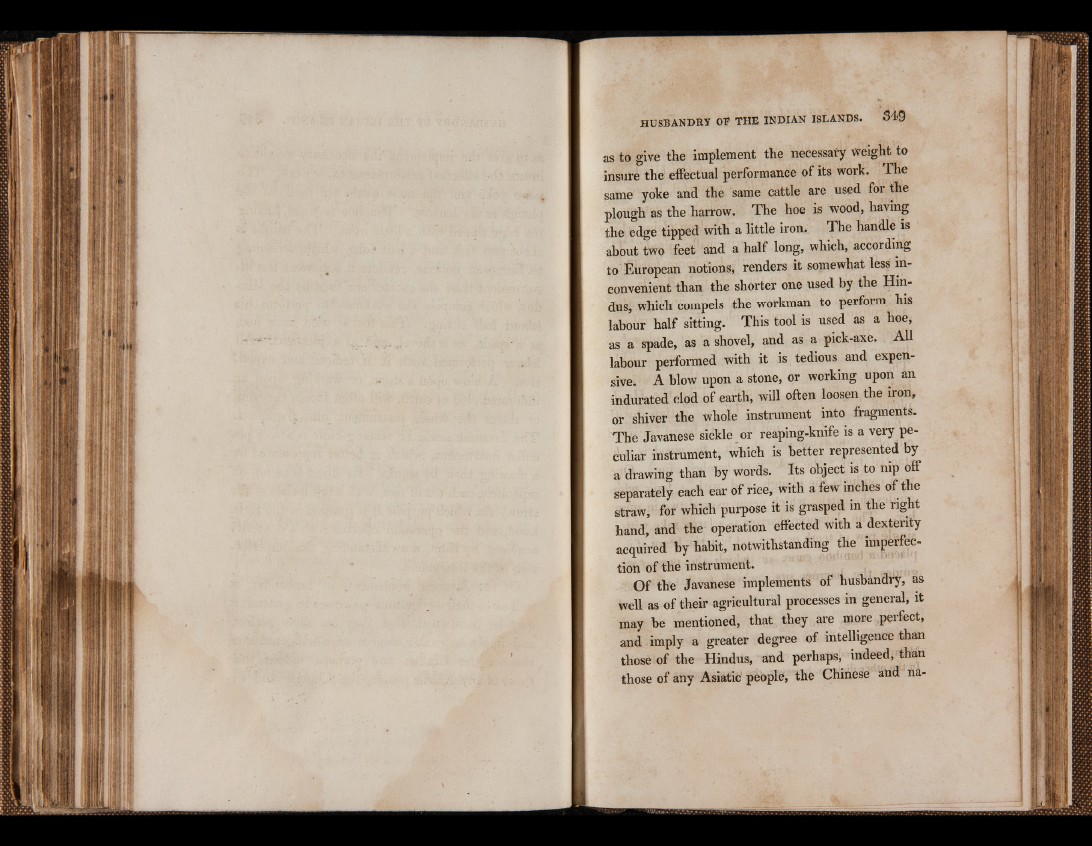
as to give the implement the necessary Weight to
insure the effectual performance of its work. The
same yoke and the same cattle are used for the
plough as the harrow. The hoe is wood, having
the edge tipped with a little iron. The handle is
about two feet and a half long, which, according
to European notions, renders it somewhat less inconvenient
than the shorter one used by the Hindus,
which compels the workman to perform his
labour half sitting. This tool is used as a hoe,
as a spade, as a shovel, and as a pick-axe. All
labour performed with it is tedious and expensive.
A blow upon a stone, or working upon an
indurated clod of earth, will often loosen the iron,
or shiver the whole instrument into fragments.
The Javanese sickle or reaping-knife is a very peculiar
instrument, which is better represented by
a drawing than by words. Its object is to nip off
separately each ear of rice, with a few inches of the
straw, for which purpose it is grasped in the right
hand, and the operation effected with a dexterity
acquired by habit, notwithstanding the imperfection
of the instrument. | _
Of the Javanese implements of husbandry, as
well as of their agricultural processes in general, it
may be mentioned, that they are more perfect,
and imply a greater degree of intelligence than
those of the Hindus, and perhaps, indeed, than
those of any Asiatic people, the Chinese and na